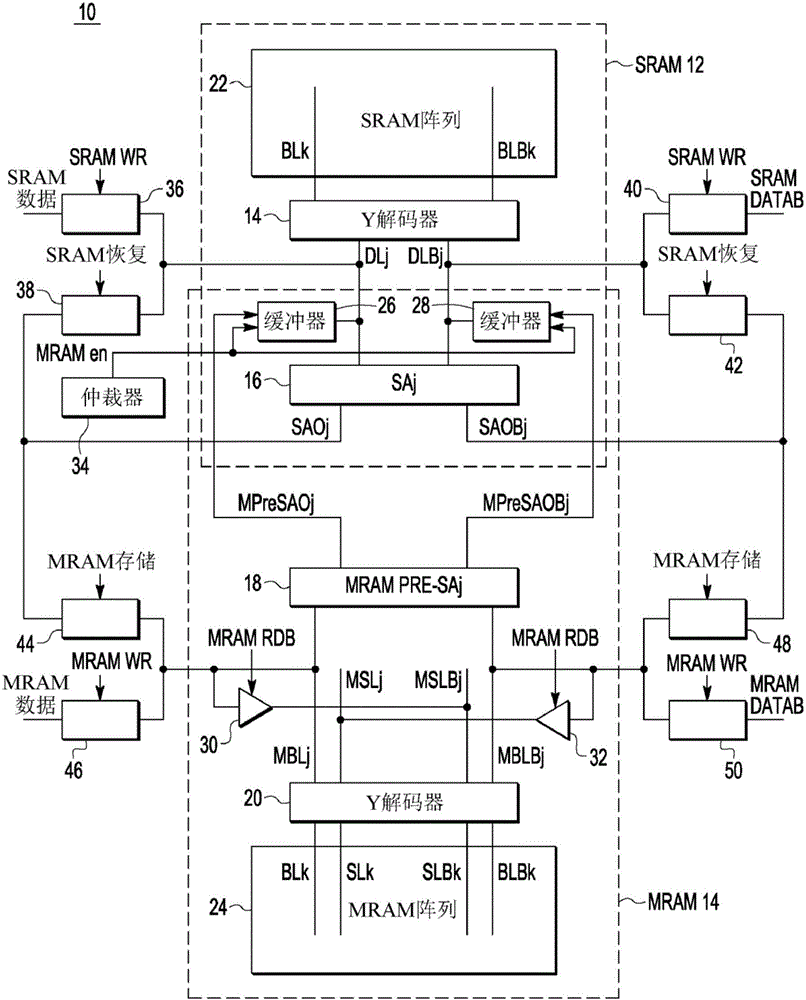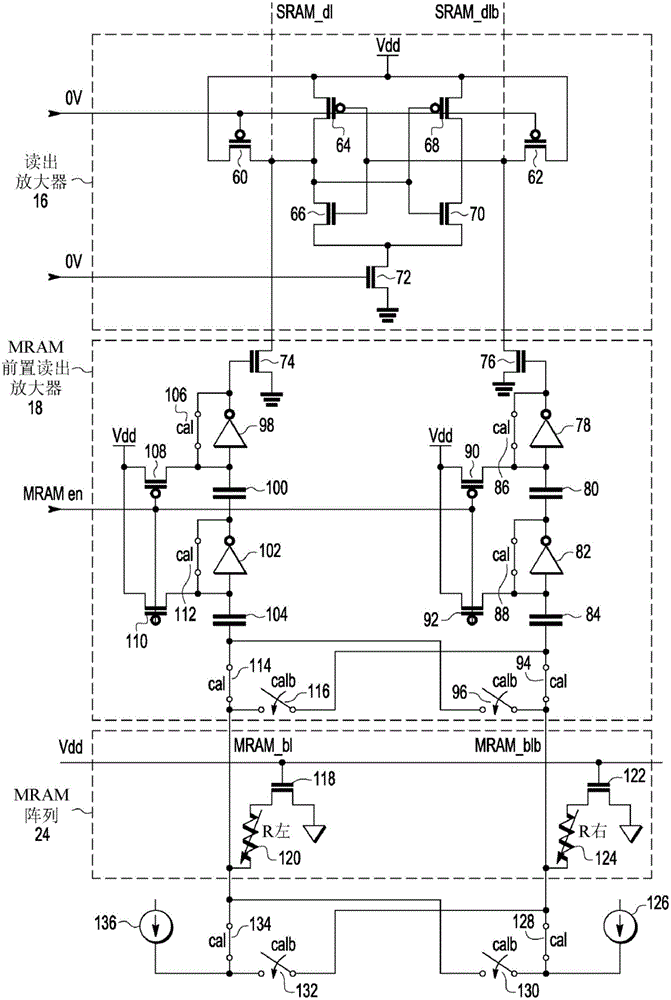Nonvolatile static random access memory (NVSRAM) system having static random access memory (SRAM) array and resistive memory array
A technology of resistive memory and static random access, which is applied in the field of memory systems and can solve problems such as area inefficiency
- Summary
- Abstract
- Description
- Claims
- Application Information
AI Technical Summary
Problems solved by technology
Method used
Image
Examples
Embodiment Construction
[0010] NVSRAM systems consist of discrete SRAM arrays and resistive memory arrays for storing and restoring backup data. Data is stored from the SRAM array to the resistive memory array for backup and restored from the resistive memory array back to the SRAM array for normal operation. To increase area efficiency, the resistive memory array and the SRAM array share sense amplifiers. For SRAM read operations, sense amplifiers are used to provide output data. In one embodiment, the resistive memory array is an MRAM array. An MRAM read operation consists of two phases: a calibration phase and a non-calibration (ie, sensing) phase. For MRAM read operations, sense amplifiers are also used in the non-calibration phase to provide output data. In this way, a tightly coupled NVSRAM system provides adequate store and restore functionality in an area-efficient manner.
[0011] figure 1 An NVSRAM system 10 according to one embodiment of the invention is shown. System 10 includes SRA...
PUM
 Login to View More
Login to View More Abstract
Description
Claims
Application Information
 Login to View More
Login to View More - R&D
- Intellectual Property
- Life Sciences
- Materials
- Tech Scout
- Unparalleled Data Quality
- Higher Quality Content
- 60% Fewer Hallucinations
Browse by: Latest US Patents, China's latest patents, Technical Efficacy Thesaurus, Application Domain, Technology Topic, Popular Technical Reports.
© 2025 PatSnap. All rights reserved.Legal|Privacy policy|Modern Slavery Act Transparency Statement|Sitemap|About US| Contact US: help@patsnap.com



